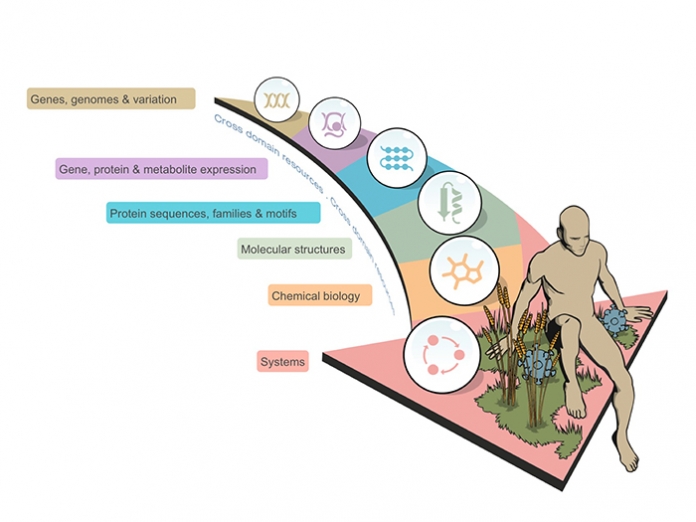What is bioinformatics?
Put simply, bioinformatics is the science of storing, retrieving and analysing large amounts of biological information. It is a highly interdisciplinary field involving many different types of specialists, including biologists, molecular life scientists, computer scientists and mathematicians.
The term bioinformatics was coined by Paulien Hogeweg and Ben Hesper to describe “the study of informatic processes in biotic systems” and it found early use when the first biological sequence data began to be shared. Whilst the initial analysis methods are still fundamental to many large-scale experiments in the molecular life sciences, nowadays bioinformatics is considered to be a much broader discipline, encompassing modelling and image analysis in addition to the classical methods used for comparison of linear sequences or three-dimensional structures (Figure 1).

Distinction from medical informatics
Bioinformatics is distinct from medical informatics – the interdisciplinary study of the design, development, adoption and application of IT-based innovations in healthcare services delivery, management and planning. Somewhere in between the two disciplines lies biomedical informatics – the interdisciplinary field that studies and pursues the effective uses of biomedical data, information, and knowledge for scientific enquiry, problem solving and decision making, motivated by efforts to improve human health.
Projects such as the 100,000 Genomes Project (for which the recruitment and sequencing phases run from 2012 to 2018, with all analyses completed by 2021) are bridging the gaps between these disciplines, but on the whole bioinformatics deals with research data and uses it for research purposes, medical informatics deals with data from individual patients for the purposes of clinical management, (diagnosis, treatment, prevention…) and biomedical informatics attempts to bridge these two extremes.